An Inconvenient Move: Promises of better living facilities remain unfulfilled for residents of Dal Lake, in Srinagar, who had to relocate
More than 1,000 families moved to Rakh-e-Arth, 12 kms away from their homes in Dal Lake, Srinagar, with the promise of a state-of-the-art housing colony. The reality has turned out to be different.


Plots of land buried under snow and water. Photo: Kanika Gupta
Srinagar, Jammu & Kashmir
It’s been more than six years now. But, memories of the catastrophic floods of September 2014 in Kashmir Valley continue to haunt Ghulam Rasool Akhoon’s family. Ghulam lost his house in Mir Behri area of Dal Lake to the floods and overnight. For the next five years, he and his family lived in a makeshift tin shed.
In October 2019, he accepted the offer of the Land and Waterworks Development Authority (LAWDA), an autonomous body formed to manage and preserve the waterbodies in the union territory, and moved to Rakh-e-Arth, along with his 35-year-old son Arshid Hussain Akhoon and his family. Rakh-e-Arth, which is 12 kilometres away from Dal Lake, is being developed by LAWDA for 9,461 families, who, for generations, have been living in Dal Lake. The relocation is meant to protect the fragile ecosystem of the waterbody spread across 22 square kilometre.
But, the relocation has only added to the woes of Akhoon’s family. And that of 1,000 other families who have moved to the new site. The new colony is a far cry from the state-of-the-art colony the residents were promised. They have to walk through slush and mud to get anywhere and the playgrounds and graveyards are under water. The hospital that was promised to them is still under construction. The roads are pockmarked with potholes. The settlement was also meant to have a primary healthcare centre, educational and recreational facilities in exchange for their lands on the lake.
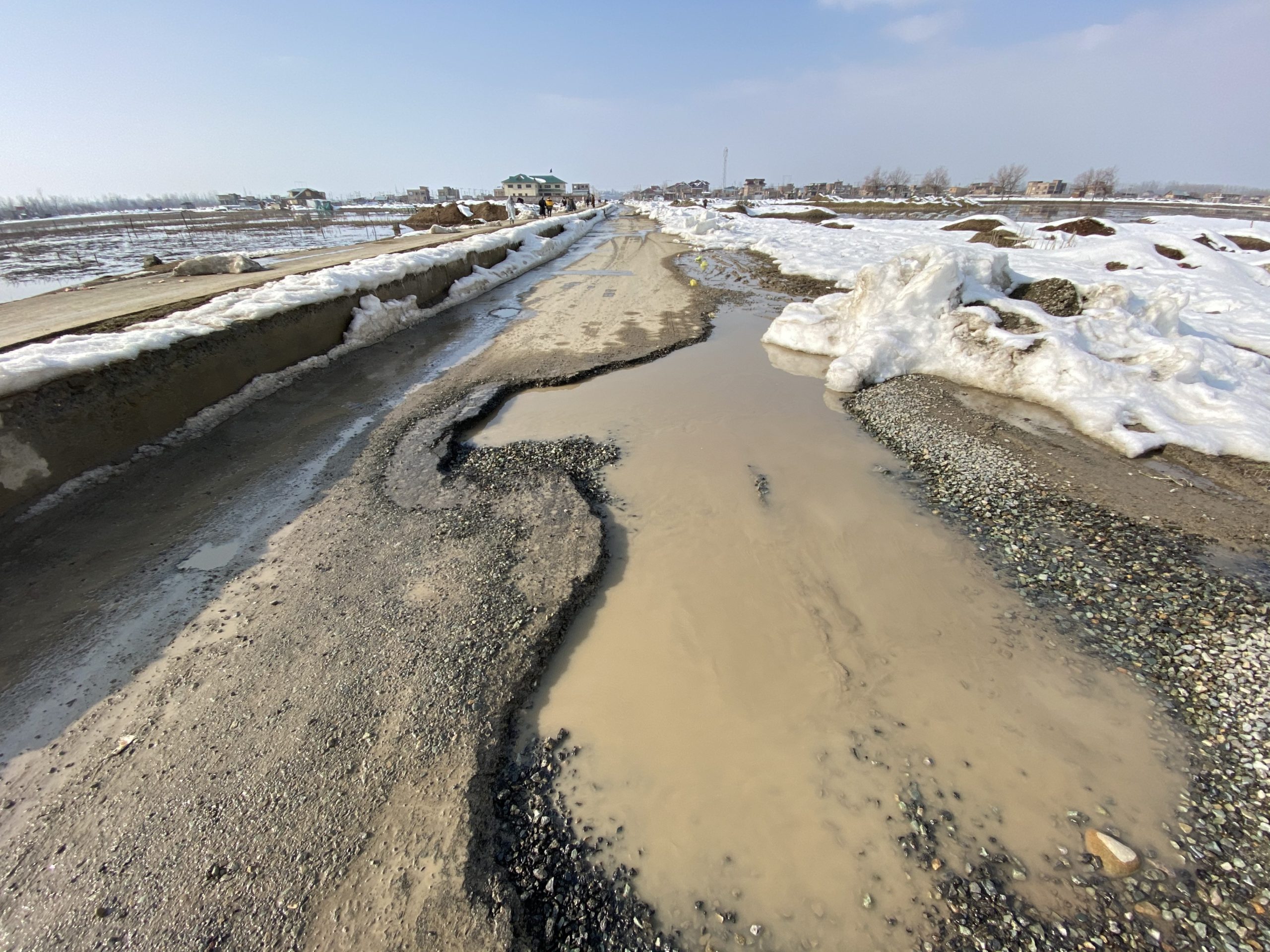
According to LAWDA, the relocation and rehabilitation project began in 2010 with the aim to move 9,461 families from Dal Lake to Rakh-e-Arth. But 11 years on, the authorities have been able to provide compensation and land to 3,250 families, of which only a little more than a 1,000 families have actually moved there.
“Our main responsibility is to rehabilitate people who are shifted out of Dal Lake to Rakh-e-Arth, where we have acquired 379.4 hectares of land,” Tufail Mattoo, vice chairperson, LAWDA, told Gaon Connection. “We have provided the basic infrastructure, such as the road network, drainage and sewage system, water and electricity,” he said. “Some areas have been designated for mosques and graveyards and a mini health centre and a hospital is being constructed by the Directorate of Health, J&K,” he added.
This rehabilitation project is being implemented at the cost of Rs 416.72 crore. At present, 4,600 plots have been developed on 177 hectares of land, informed Mattoo.
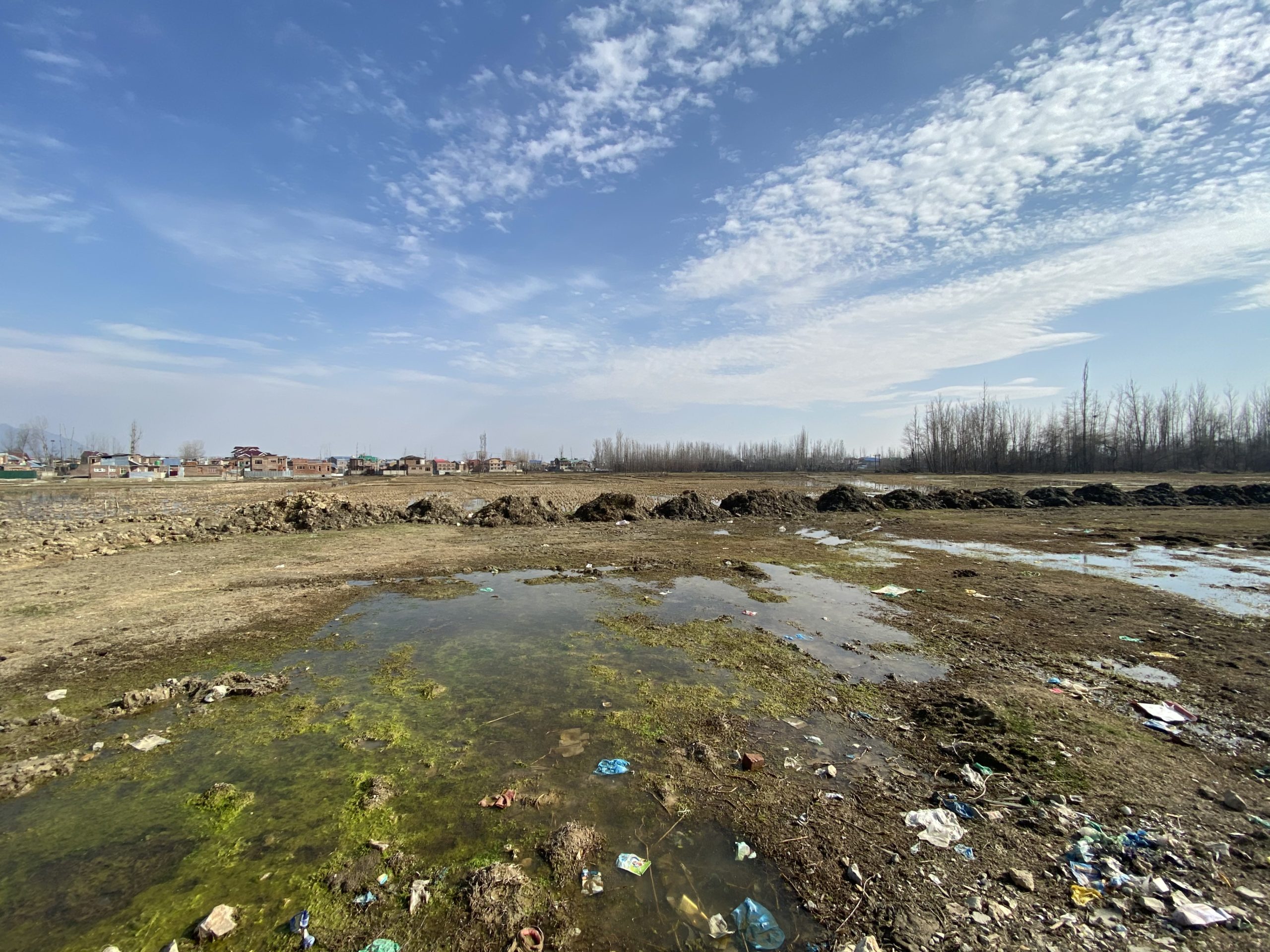
Shifting Pains
Before they moved to Rakh-e-Arth, Arshid and his wife, Mubina Arshid Akhoon, worked as farmers in Dal Lake where they grew tomatoes, collard greens, spinach and turnip in the floating gardens, from which they earned about Rs 40,000-50,000 a month. Now, Arshid, finds sporadic work at construction sites where he gets paid no more than Rs 500 for a day’s hard labour. “And the work is never for more than 12-14 days a month,” he told Gaon Connection. He goes to the mazdoor mandi (job market), an unorganised labour market outside the colony where people from all over Srinagar come to hire cheap labour for construction work, carpentry, plumbing, etc. “It pays very less and the market is very competitive. Sometimes, we sleep hungry at night,” he said.
Mohammad Abbas Tinda, 70, moved to Rakh-e-Arth in 2012. He was a farmer on the lake earning about Rs 8,000 a month that helped him look after his own expenses. Now he is dependent on his son, Fida, a tourist guide. “We moved here because we were not allowed to repair our homes in Dal Lake. So we didn’t have any other option but to move here. My father lost his farming income and now relies on me for his expenses,” Fida told Gaon Connection. Because tourism is dull now, Fida works as a salesman at a store in Srinagar, and earns about Rs 8,000 to Rs 10,000 a month.
Healthcare Access
The lack of proper medical facilities in the vicinity of the resettlement colony has come to haunt many families.
Mohammad Ghulam Akhoon, aka Bulbul, sold flowers for a living in Srinagar’s Dal and Nigeen Lake, for three decades. He lived with his family in Takia Shah Mohalla in Dal Lake near Hazratbal Mosque in Srinagar.
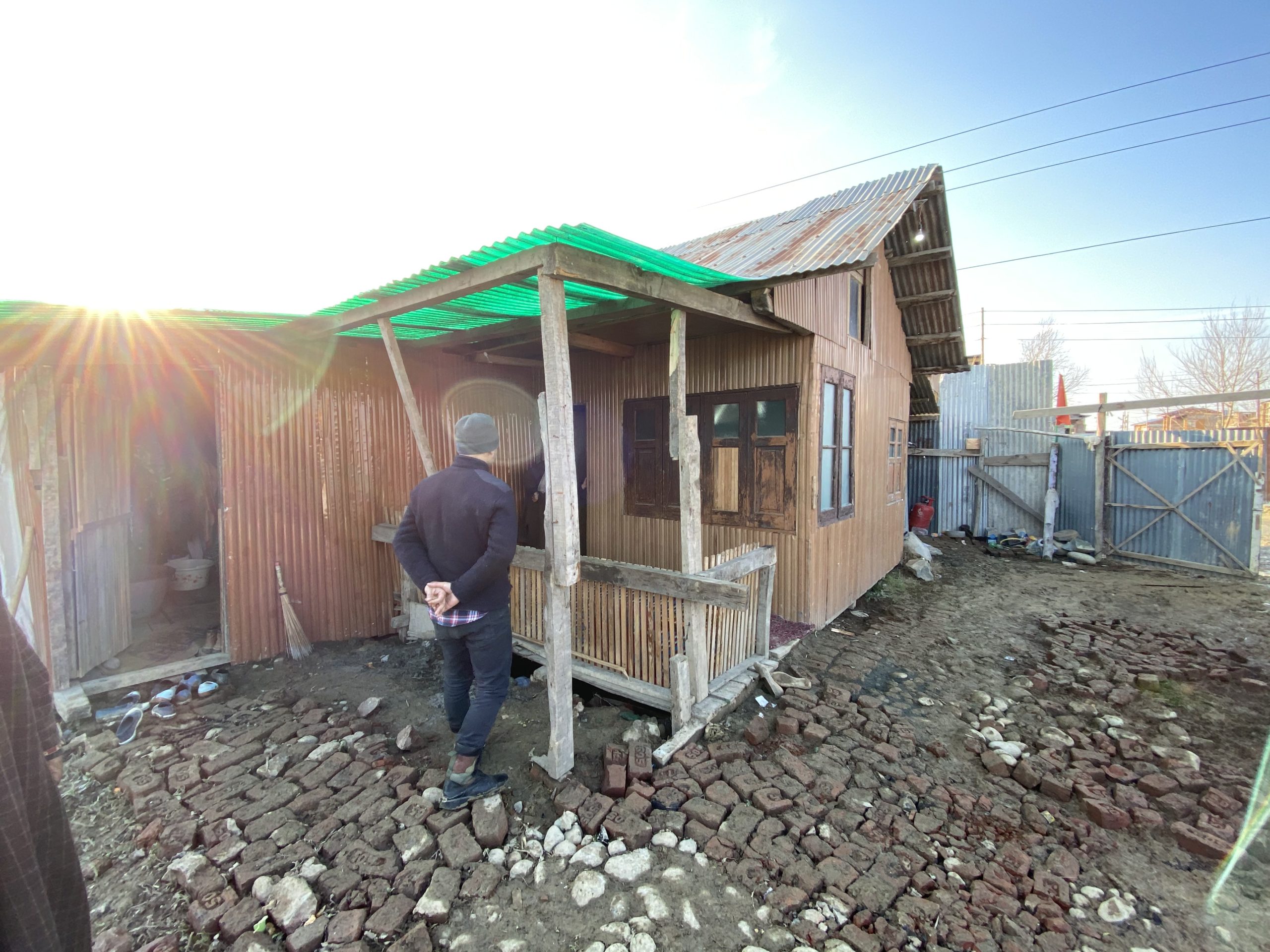
In 2019, they were approached by the LAWDA officials who offered them Rs 500,000 and a plot of land if they relocated to Rakh-e-Arth at the fringes of Srinagar. Accepting their offer and hoping for a better life, they moved there on March 8, 2020, a few days before the country went into COVID-19 lockdown.
But their lives turned upside down. Bulbul who was a chronic heart patient had to make multiple trips from Rakh-e-Arth to a private clinic in Khaniyar near Khyber Hospital, about 8 kms away for treatment, which was a further drain on the family’s finances. His medicines cost him Rs 1,000 a week in private clinics. And because of the pandemic, sources of income had dried up.
On January 31, Bulbul woke up, prayed and went out in the biting cold to fetch bread for himself and the family. He decided to nap after his breakfast of czhot (Kashmiri bread) and noon chai (salt tea), and never woke up. He died in his sleep of a heart attack.
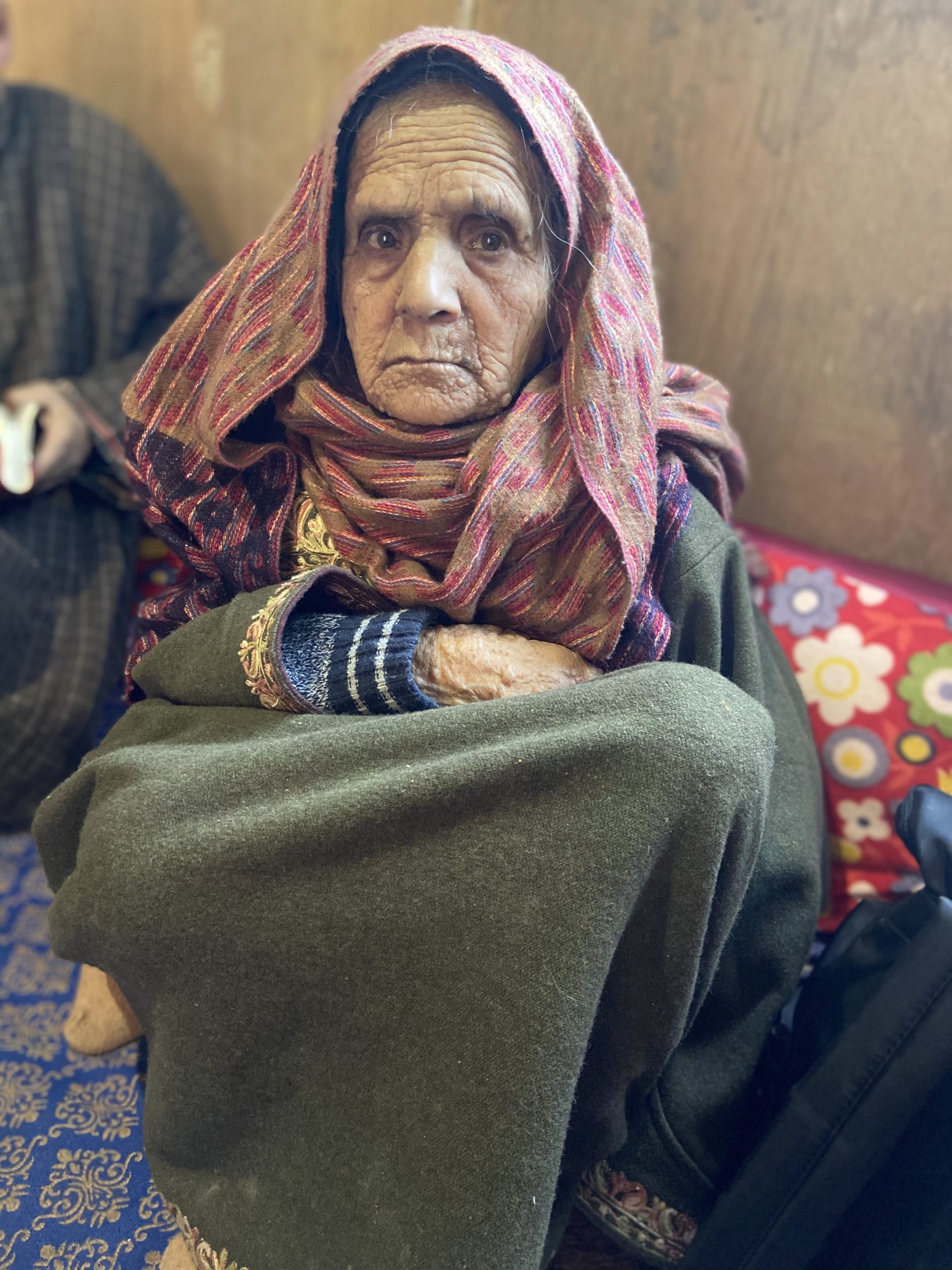
There is a sub-health centre at Rakh-e-Arth, but it is woefully under equipped to handle emergencies. “People with any medical emergencies will have to go to the primary health centre at Pantha Chowk about ten kilometres away,” Saima Suneem, health provider at the sub-health centre, at Rakh-e-Arth, told Gaon Connection. The sub-health centre works only from 10 am to 4 pm, and offers no ambulance services to transport emergency cases.
The lack of access to healthcare is proving to be a major problem for Arshid and Mubina, too. Their 11-year-old son, Mohsin Hussain has cerebral palsy, and acute jaundice. While taking him to the government hospital from Dal Lake was not difficult as it was centrally located, at Rakh-e-Arth they have to travel at least 10-12 kms every time Mohsin’s symptoms aggravate.
“People could access hospitals from Dal Lake because almost everyone had a small boat. They used it to quickly reach the main road and called for an ambulance or used an auto rickshaw. But here, there are no transport facilities within the colony and most people don’t have cars,” Fida Hussain, a local activist and a resident of Rakh-e-Arth, pointed out to Gaon Connection.
Families with young children also face the problem of having no school close by, and of course no local transport. “We have to pay extra for school buses for our younger children,” said Hussain. “We were assured that there would be schools nearby, but the closest one is three kms away,” he said. The promised schools in the colony are yet to be constructed and even the one school the children go to is only partially constructed.
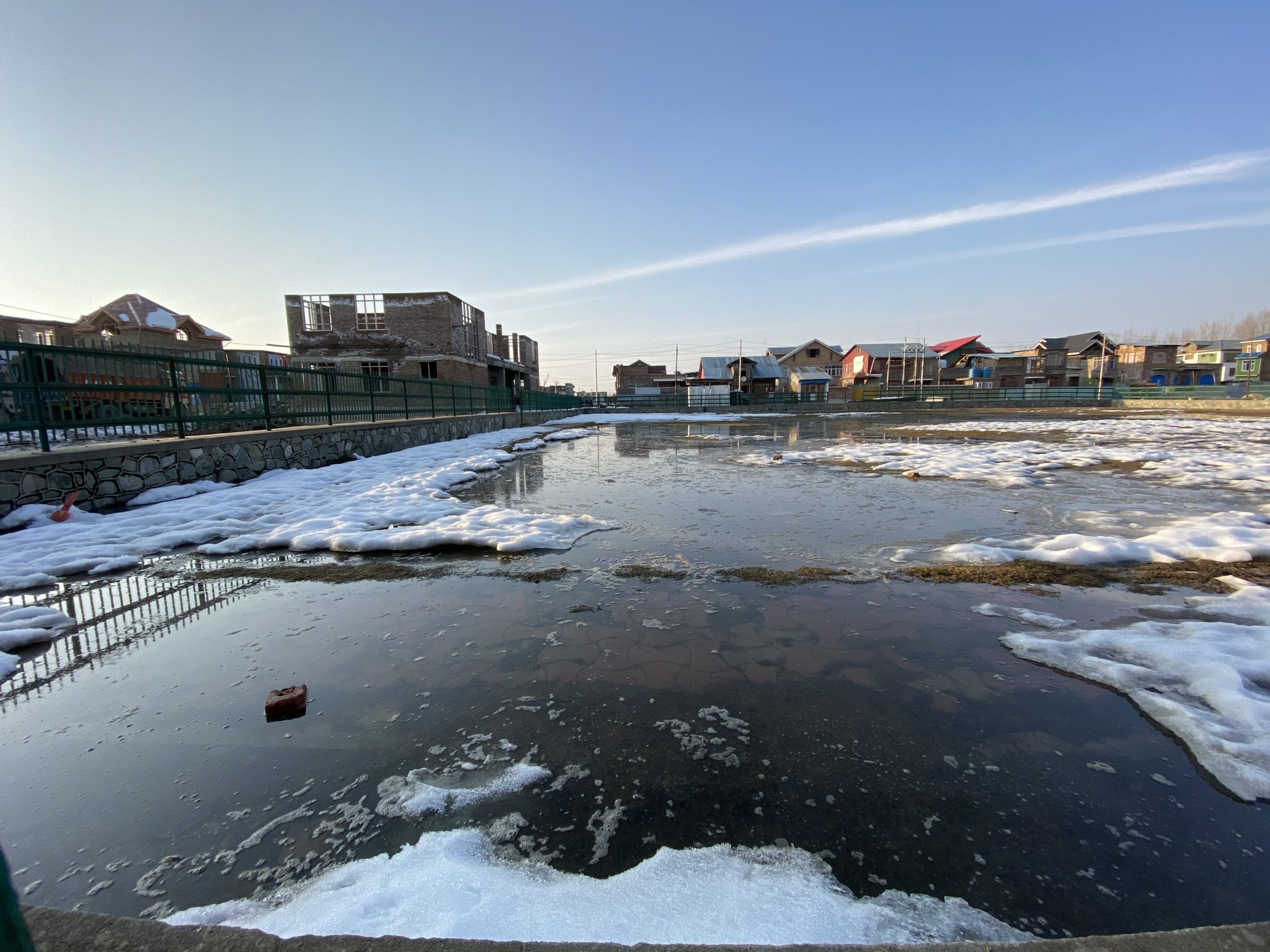
No rest for the dead
Residents who have relocated to Rakh-e-Arth complain they cannot even bury their dead ones without facing problems. The burial ground in their new colony was yet to be commissioned and the residents of the other areas where the graveyards were ready, refused to allow ‘others’ to bury their dead there.
“We couldn’t find a grave for my father. The graveyard close to where we live was not ready yet. And, while two graveyards were ready in another quarter of Rakh-e-Arth, the residents there did not allow us to bury my father there,” said Yousuf, son of Bulbul. “We were forced to buy a burial space at Hasanabad, Saida Kadal, seven kms away from our house. What should have been available to us for free, cost us more than fifty thousand rupees,” he added.
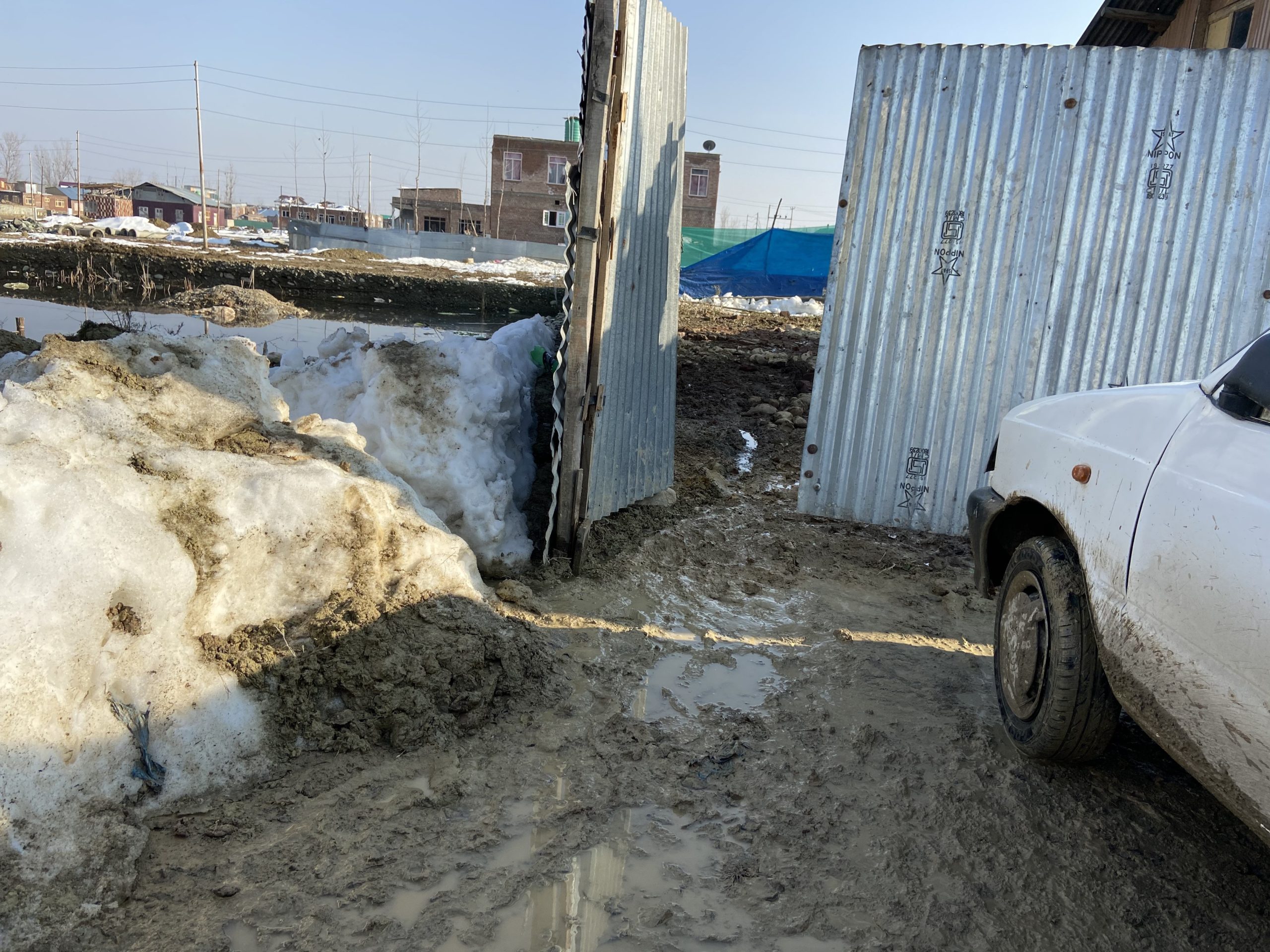
Back at the Dal Lake, people had some ancestral land to bury their dead, but not in Rakh-e-Arth.
On being contacted, Foqiya Iftikhar, junior engineer, LAWDA Rakh-e-Arth sub division, told Gaon Connection, “At present, we have two graveyards that are functional. For more than thousand families living in Rakh-e-Arth, these two graveyards spread over four kanals (0.2 hectares) should suffice for at least two to three years.”
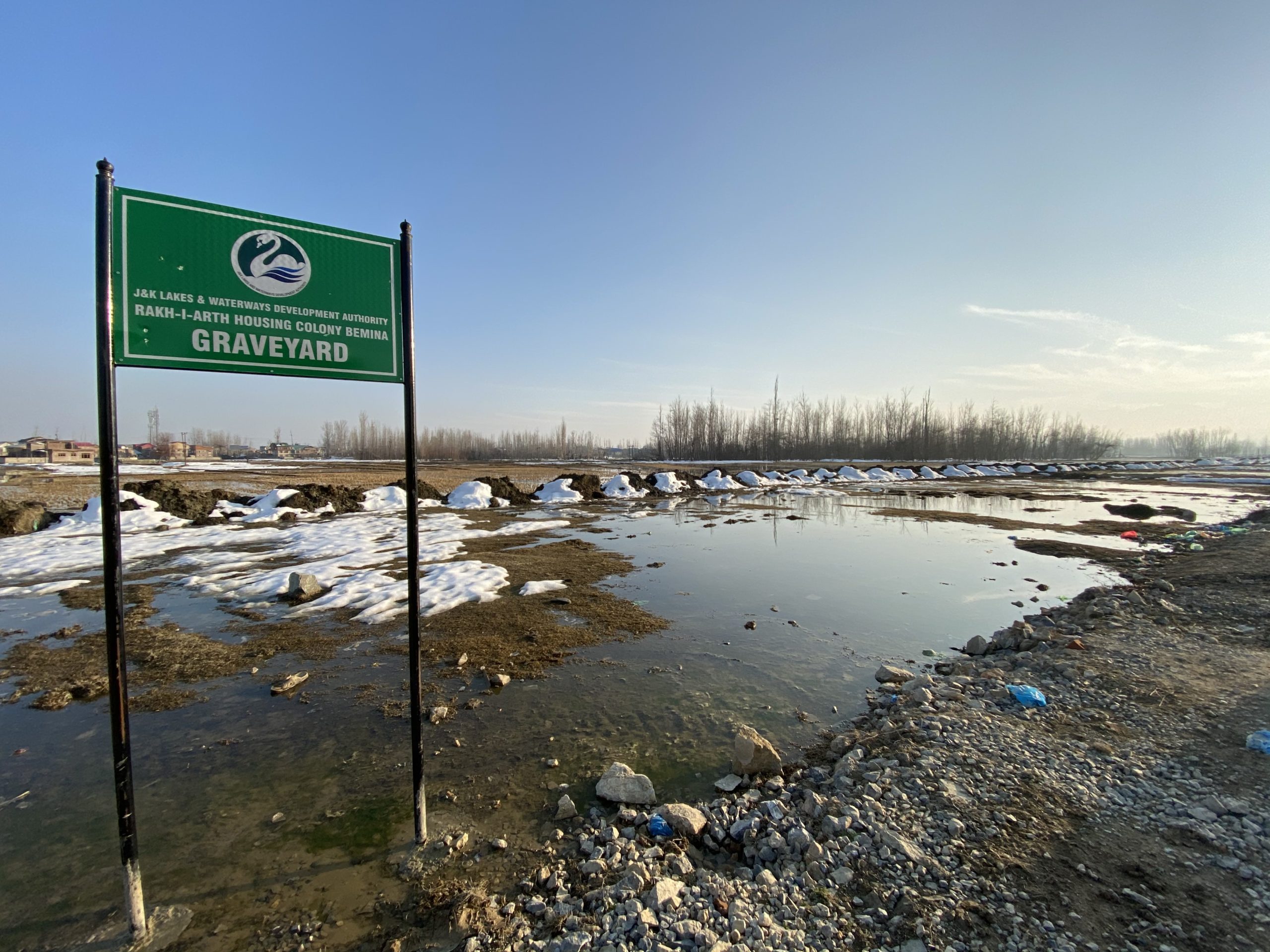
“Our project has earmarked six graveyards for the colony, but they all can’t come up at the same time. So until that happens, the available graveyards are for everyone to use,” she reiterated.
She admitted that the developmental work had come to a standstill due to the COVID-19 lockdown. “Some of the contractors are yet to be paid for their previous jobs. They refuse to work until their payments are cleared,” said Ifthikar.

